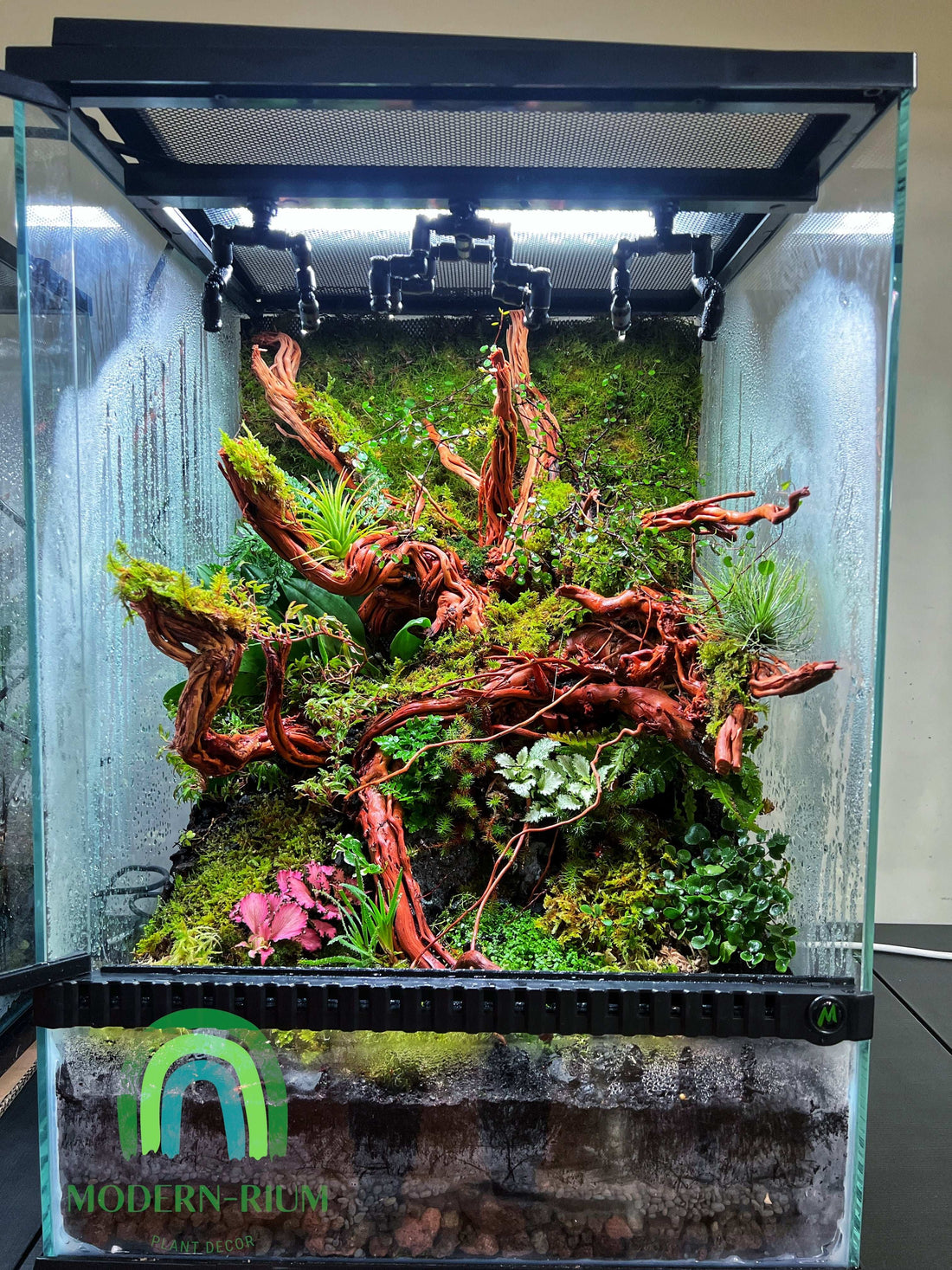
🐛 Pest Control in Closed Terrariums: Natural Methods
Danny PhamShare
Closed terrariums create a beautiful, self-sustaining mini ecosystem — but even tiny jungles can attract unwanted guests. Pests like gnats, mold mites, or springtails can sneak in and throw off the balance of your terrarium.
Don’t panic — you don’t need harsh chemicals to keep your glass garden healthy. Here's how to naturally control pests in closed terrariums and restore harmony using safe, eco-friendly methods.
🧪 Common Pests in Closed Terrariums
Before jumping into solutions, it’s helpful to know what you're dealing with:
| Pest | Description | Harmful? |
|---|---|---|
| Fungus gnats | Small black flying insects | Mild — mostly annoying |
| Springtails | Tiny white or gray jumping bugs | Beneficial |
| Mold mites | Microscopic bugs in decaying material | Can cause mold spread |
| Aphids/Mealybugs | Sap-sucking bugs (rare in terrariums) | Harmful |
🌿 Natural Pest Control Methods
1. 🌬 Air It Out Occasionally
Even though closed terrariums are sealed, opening the lid once every few weeks improves air circulation and reduces excess humidity, which can discourage mold and mites.
Tip: Let your terrarium “breathe” for 30–60 minutes once a month, especially if you see condensation build-up.
2. 🧼 Clean Up Dead Leaves & Debris
- Rotting leaves are a buffet for pests like mold mites and fungus gnats.
- Remove any yellowing, dead, or decaying plant material.
- Use tweezers to gently clean hard-to-reach areas.
- Avoid overwatering, as moist soil encourages decay and fungus.
3. 🪳 Add Springtails (The Good Bugs)
Springtails are tiny decomposers that eat mold, algae, and dead plant matter. They’re often used in bioactive terrariums.
- Purchase live springtails from a reputable source.
- Sprinkle them into the soil — they’ll regulate the ecosystem naturally.
- They’re harmless and invisible most of the time.
4. 🧂 Cinnamon as a Natural Fungicide
Cinnamon is anti-fungal and can help prevent mold growth — which indirectly helps with mold mites.
- Lightly sprinkle ground cinnamon on the soil surface.
- Don’t overdo it — too much can clog soil airflow.
5. 🧴 Neem Oil Spray (Use with Caution)
Neem oil is a natural pest repellent. While it's more common for open terrariums or houseplants, it can be used sparingly in closed systems.
- Mix 1 tsp neem oil, 1 tsp mild soap, and 2 cups water in a spray bottle.
- Lightly mist affected plants with the lid open, then leave open for 1–2 hours.
- Use only when needed — excessive use may disturb the terrarium’s balance.
6. 🚱 Let Soil Dry Slightly Between Waterings
Overwatering is the #1 cause of pests. Moist soil = breeding ground for gnats and mold.
- Wait for condensation to disappear before watering.
- Use a dropper or syringe to add small amounts of water directly to the roots.
🚫 What to Avoid
Chemical insecticides – These can harm your plants and upset your closed ecosystem.
🔁 Maintenance Schedule
Weekly
- Check for pests or mold
- Remove dead leaves
Monthly
- Air out terrarium
- Inspect soil moisture
- Clean glass inside
Seasonally
- Add beneficial bugs (like springtails)
- Refresh soil surface if needed
🧘 Final Thoughts
Dealing with pests in a closed terrarium can be frustrating — but it’s completely manageable with natural methods. Prevention is key: maintain cleanliness, don’t overwater, and use helpful allies like springtails or cinnamon.
A balanced terrarium is a happy one. With the right care, your little ecosystem will thrive, pest-free.
 is here! Shop now, pay later in 4 easy installments
is here! Shop now, pay later in 4 easy installments










